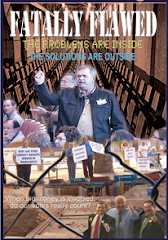July 2, 2009 - 11:12am ET
Campaign for America's Future
When the CBO scored an early draft of the health care form bill from the Senate HELP committee as costing $1 trillion over 10 years but only covering one-third of the uninsured, obstructionists pounced and proclaimed the public plan option dead.
But the CBO had not assessed the cost of the public plan option, nor a mandate on most employers to either provide insurance or contribute to the public plan.
Now they have. And as serious reform advocates long claimed, including those two key provisions drops the 10-year cost of reform by nearly $400 billion, while achieving near universal coverage.
Will the self-proclaimed deficit hawks now embrace the public plan option since it would save money? Or will they come up with fresh excuses, such as fear-mongering that the public plan would decimate the private insurance industry?
Let's add one more piece of information to the mix: the underreported report from the Urban Institute, "Is the Public Plan Option a Necessary Part of Health Reform?"
What did the Urban Institute find?
First, a public plan won't kill competition, because competition is currently non-existent:
...health insurance markets today, by and large, are simply not competitive. And as such, these markets are not providing the benefits one would expect from competition, including efficient operations and consequent control over health care costs. We believe that the concentration in the insurance and hospital industries that has taken place over the past several years has been a significant contributor to this problem. The role of the government plan is to counter the adverse impacts of market concentration and, in doing so, slow the growth in health care costs.
Second, Urban predicts private companies would respond to the new competition in a fashion that would allow them to maintain a significant share of the market, taking issue with an earlier report from the Lewin Group that assumed a whopping 119 million would leave private plans.
The Lewin report ... did not assume that there would be a response on the part of private payers. Private insurers would clearly respond to the presence of a public plan competitor by negotiating more aggressively with providers. Providers in turn would most likely find it in their interest to negotiate lower rates with insurers; otherwise, they would risk the exit of private plans and have only the public plan with which to contract. As private plans bring down their costs, the difference in their premiums from those of the public plan would shrink as well, possibly attracting more enrollees ... [While] any enrollment prediction will require significant assumptions about individual behavior ... We predict that roughly 70 percent of the low-income exchange enrollees (those under 200 percent of the federal poverty level) would choose the public plan, with the likelihood of choosing the public plan falling as income increases ... about 47 million would enroll in coverage through the public plan ... Private plans would continue to serve about 161 million Americans.
If the public plan option saves money, enhances competition and far from prompts the collapse of private insurance (which is the only scenario where public plan option polls badly), then the detractors have literally no leg to stand on.
















